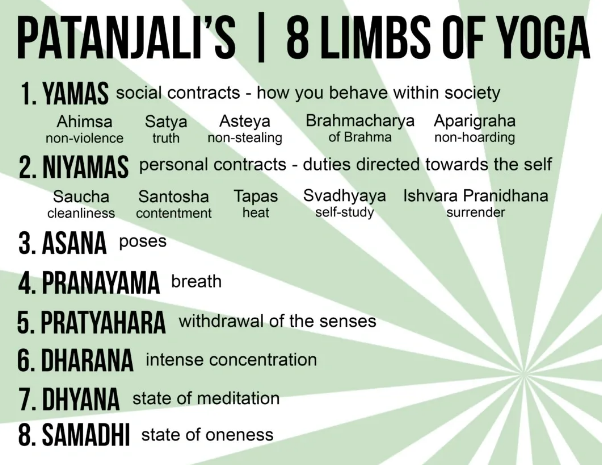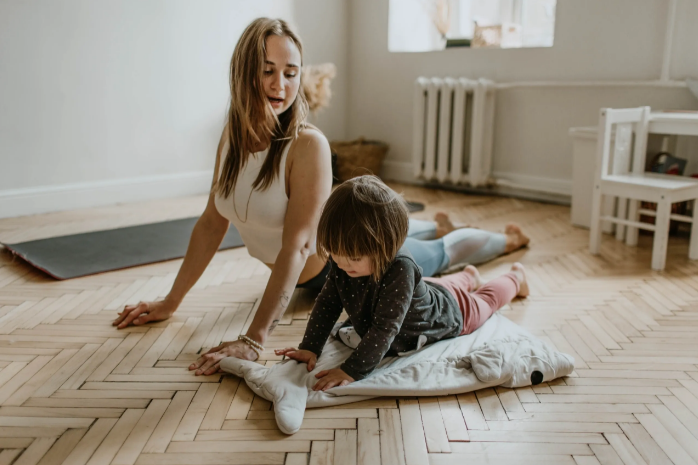Children are natural zen masters, their world is brand new in each and every moment (John Bradshaw)
When my boys dragged out the yoga mats, spread them out and mimicked my downward facing dog, I was elated. So elated that I decided to look further into yoga for kids. I knew then, I had read somewhere what yoga can do for growing minds. That was 2013.
My boys were then two and three years old. We were living in Oslo, Norway where authentic yoga is a pretty rare commodity, what more, yoga for kids.
Fast forward a year later, relocation to Kuala Lumpur and brief conversation with a friend led to many online researches to seek more information on kids’ yoga. It was then that I found MAYI’s Super Yoga Kids Instructors certification course.
I have never looked back since.
You see, Super Yoga Kids is a total depiction of what adults’ yoga is, and more.
Let’s talk.
Super Yoga Kids (SYK) is the name given for MAYI’s yoga classes for children.
The term Super Yoga is coined from the fact that it is believed a child will emerge awe-inspiring in more aspects than one after picking up yoga at a young age. The age we are talking about is four – yes, a child can start taking up yoga at the tender age of four; even though there are remote cases of even younger kids practicing this beautiful ancient Indian art.
Now, what exactly is Super Yoga Kids?
Like regular (adults) yoga, children are guided through tailored asanas (poses) to safely develop balance, strength and suppleness.
At the same time, establish a better sense of physical, emotional and mental ability.
Specialized teaching techniques are used to stimulate young minds while nurturing their physical and mental development.
I cannot reiterate enough how positive yoga is to anyone; and for a child, it will definitely be the greatest gift ever.
The best part, in my opinion is that Super Yoga Kids helps to instill values in the young. The current state of chaos in this world makes it an even better time to expose our young children to the right rules of conduct and standards of behavior.
First and foremost, let’s take a look at the physical aspects of SYK; how the kids are guided in this art and what they can expect in terms of physical development.
To put it simply to a child, SYK is just a way of moving their tiny bodies gently and without much effort to improve and maintain their physicality and keep them in tip-top condition.
Of course, as the young child gets older, he might be keen to know the deeper meaning of yoga and they are very much welcome to research more into this art.
With the heavy load school-going kids carry on their shoulders each day, the countless hours they spent hunched in the classroom; not to mention mental alertness that is required to follow through lessons, I can only think of one activity, a saving grace, if you will, that should be incorporated into their daily lives – YOGA. SYK will see that their lopsided shoulders get eased-up, rectify their hunched back to a better posture and most definitely calm and sharpen their minds for better attention and absorption of what is taught in class.
To put things in perspective, let’s take a look at a typical SYK session.
In SYK, sessions usually start with awareness and energisation. It is SYK’s philosophy that children must be taught to be aware of their being and existence. This exercise reiterates the beautiful and miraculous part of themselves; their bodies.
Joint exercises or pawanmuktasana, as we call it in yoga, comes next. In this session, kids are guided through stretching, bending and rotating sequences of their joints in every part of their body; better still the places which are often neglected, like the hip and toe joints.
After working and easing on the joints, the children will then go on to do Surya Namaskar or Sun Salutation. Surya Namaskar is a chain of choreographed asanas or poses to help in the clarity of mind, regulation of breaths and total body well-being.
Asanas comes right after Surya Namaskar. Asanas or poses in SYK, most often than not, are conducted in fun and interactive manner. Most asanas are given animal names so kids can act-out and mimic the given animal for each of the asanas. This creates a lot of imaginative play and teamwork; not to mention the improvement of vocabulary and word-grasps.
Yoga Nidra is a very powerful form of relaxation. It is a combination of awareness of the physical body and and creative visualisation through rotation of conciousness. Children are guided through simple and short visualizations.
Breathing plays a vital role in SYK. Deep and proper breathing ensures oxygen is taken to right places so that inner cells are well oxygenized and energized to function properly.
Oxygenized cells also mean improved nervous system, better mental alertness, improved digestive system, which also acts as an immunity booster. So common coughs and colds will be at bay; good news for parents!
With all these in mind, it’s not a wonder breathing takes the center stage in yoga.
SYK’s signature Mind Training is a definite boost for children. It works on internal factors like left-right brain hemispheres which helps in creativity and being calm, amongst others.
Since we are dealing with young, active minds and bodies, creativity plays a huge part. Thematic asanas is big with children of SYK. They just love to wonder their minds in fantasy, depending on what theme that days holds, while their tiny bodies move fluidly, from each asana to the next.
So, with the physical aspects of SYK explained, let us take a look in depth as to what constitutes instilling values in SYK.
There are two parts to this; Yama and Niyama.
Yama is regaining balance in life; while Niyama is the practices that lead to wisdom and self-knowledge.
Together, they have the power to help to implement and regain values that most certainly are depleting, unfortunately, with the rise of technology and use of gadgets.
With all these conveyed to a child at a very young age, it will be amazing to see him or her develop and function as a wholesome and well-rounded individual later on in life.
Super Yoga Kids, as we call it, will not turn a child into Superman but it will definitely make the child a super human; body, mind, soul.
Super Yoga Kids is offered by Malaysia Association of Yoga Instructors (MAYI).
Connect with them on FB https://www.facebook.com/mayi.yoga.academy

YOGA, A force to be reckoned with
A worldwide phenomenon, yoga is an art and science of healthy living. Yoga has been deduced to be the healing power of many sorts of discomforts and ailments. If done correctly, some restorative yoga can also bring about reversal of certain ailments. In short, yoga is a force to be reckoned with; a ‘chi’ for living, if you will.
The world has started taking notice of yoga since the 1950s but it was not until the 60’s and 70’s Flower Power era that catapulted yoga to its current state of euphoria. Afterall, isn’t yoga all about giving love, receiving love and living wih a non-violent idealogy? Yes, yoga is indeed all that and much more.
This beautiful ancient practice is essentially a spiritual discipline based on an extremely subtle science, which focuses on bringing harmony between mind and body. The fluid movement, shifting from one asana to the other, as soft and gentle as it may seem brings about total mental and physical awareness.
Breathing which many of us take for granted is the fundamental point of yoga, without which, all movements will be just that; simply movements, without impact whatsoever. Breathing consciously is the essence of yoga. It assists in connecting with subtle energy from within. It is through breathing we are able to navigate different levels of consciousness. Breathing consciously has a biological effect on our mental, emotional and physical state.
Coming back to the ancient practice of yoga, there are few written books that chronicle the early days of yoga and its original structure. Theories and asanas were compiled into one such book by the scholar Patanjali in the 2nd or 3rdcentury B.C. This book is entitled Yoga Sutras.
Patanjali wrote about the classic Eight Limbs of Yoga, which is the original system of this ancient practice. Translated to Sanskrit, Eight Limbs of Yoga is known as Ashtanga – also where Ashtanga Yoga got its name from.
The Eight Limbs are namely :
1. Yama (restraint)
2. Niyama (observances)
3. Asana (the physical yoga exercise)
4. Pranayama (breathing techniques)
5. Pratyahara (preparing for meditation)
6. Dharana (concentration)
7. Dhyana (meditation)
8. Samadhi (absorption, submerge with the eternal and divine)
However, like any other sciences, Yoga evolve. Evolution of Yoga is most definitely a positive one.
The variety and interpretations of yoga practice available makes yoga accessible to people of all different cultures, belief systems and socio-economic levels.
Having said that, the fundamental Eight Limbs of Yoga scriptures of Patanjali should always be the main core of the practice, whichever variation and interpretation one dwells in. These eight steps basically act as guidelines on how to live a meaningful and purposeful life. They serve as a prescription for moral and ethical conduct and self-discipline; they direct attention toward one’s health; and they help us to acknowledge the spiritual aspects of our nature. These eight steps mainly focuses on the mind and body’s wellbeing and health without swaying too far from the original .
It is also in the most recent years, in yoga’s evolution era that people have come to realize that yoga is a non-religious practice. My most favourite quote to-date is, “Yoga practitioners consists of very secular, practical, body-oriented people, to the most spiritual people on the planet, and everything in between. And it serves all of those purposes because these are universal teachings.” – such a profound way to expel any religious connotations.
After all these years, one thing I know for sure; an inspiring teacher should always be chosen to lead the way for this beautiful practice. The essence of yoga is most definitely student-teacher relationship and the intuitive passing along of knowledge from one another.






